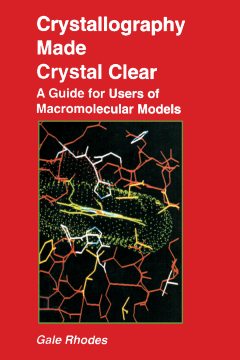
Additional Information
Book Details
Abstract
Crystallography Made Crystal Clear is designed to meet the need for an X-ray analysis that is between brief textbook sections and complete treatments. The book provides non-crystallographers with an intellectually satisfying explanation of the principles of how protein models are gleaned from X-ray analysis. The understanding of these concepts will foster wise use of the models, including the recognition of the strengths and weaknesses of pictures or computer graphics. Since proteins comprise the majority of the mass of macromolecules in cells and carry out biologically important tasks, the book will be of interest to biologists.
Provides accessible descriptions of principles of x-ray crystallography, built on simple foundations for anyone with a basic science background
Leads the reader through clear, thorough, unintimidating explanations of the mathematics behind crystallography
Explains how to read crystallography papers in research journals
If you use computer-generated models of proteins or nucleic acids for:
Studying molecular interactions
Designing ligands, inhibitors, or drugs
Engineering new protein functions
Interpreting chemical, kinetic, thermodynamic, or spectroscopic data
Studying protein folding
Teaching macromolecule structure,and if you want to read new structure papers intelligently; become a wiser user of macromolecular models; and want to introduce undergraduates to the important subject of x-ray crystallography, then this book is for you.
"The past several years have witnessed an explosion of new protein crystal structures. Efforts by the author to provide mechanism by which non-specialists can come to better understand and access the information are timely."
David Matthews, Agouron
